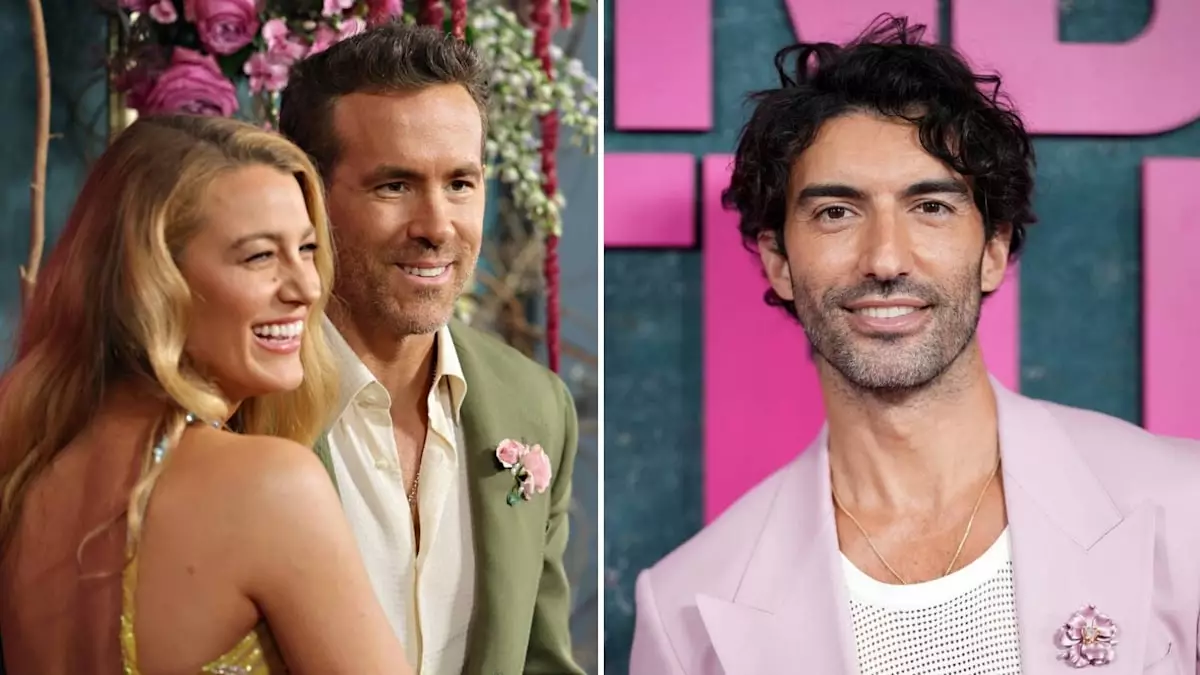The unfolding legal conflict between actor Justin Baldoni and actress Blake Lively has captivated the public’s attention, showcasing not only the intricacies of Hollywood relationships but also shedding light on the often chaotic nature of film productions. This ongoing saga not only involves Baldoni and Lively but also calls out notable figures such as Ryan Reynolds and prominent media outlets like The New York Times. At the core of this dispute are allegations of a conspiracy birthed from a troubled film production that has led to a series of public revelations.
On February 1, 2025, Baldoni’s legal team unveiled a dedicated website titled “Lawsuit Info,” which serves as a repository for significant documents associated with the case. This includes an “Amended Complaint” which outlines the specifics of Baldoni’s legal grievances against Lively, Reynolds, and their public relations teams. The second document, labelled “Timeline of Relevant Events,” reveals a timeline stretching back to 2019, when Baldoni initiated contact with author Colleen Hoover concerning the film adaptation of her novel “It Ends With Us.”
The timeline marks the progression of events leading up to the filing of the lawsuit, encapsulating three years of alleged conspiratorial behavior. This aspect is particularly striking; it suggests that the tension among the parties involved had been simmering beneath the surface long before the public became aware of it. Baldoni’s claims center upon accusations that Lively and Reynolds collaborated with the Times to create a damaging exposé about him, effectively eroding his reputation and undermining the film’s promotional efforts.
A salient feature of the newly released documents is the inclusion of purported conversations between Baldoni, Lively, and Reynolds. These conversations reportedly showcase a façade of mutual respect, despite the evident discord beneath. For example, text exchanges reflecting positive sentiments about working together stand in stark contrast to the legal grievances now at the forefront.
Moreover, the timeline presents a series of promotional discrepancies and public appearances that intensified the rift between Baldoni and his co-stars. The act of Colleen Hoover, alongside the cast members, unfollowing Baldoni on social media adds layers to an already complex narrative. It invites speculation about the broader dynamics at play within the project and among those involved.
Significantly, Baldoni’s legal documents highlight an alleged statement that framed the on-set environment surrounding “It Ends With Us” as fraught with difficulties. The draft, reportedly prepared by Lively and Reynolds, suggested that Baldoni and his production company, Wayfarer Studios, were responsible for any backlash that arose from how the film was marketed – notably, as a “Barbie film.” This noteworthy detail indicates a burgeoning divide within the production team itself, as the statement distanced Lively and Reynolds from accountability for the film’s critical reception.
The public’s perception of this legal battle has been rife with intrigue, fueled by a combination of celebrity culture and everyday human drama. The ongoing test of reputations raises questions about the ethical boundaries of public relations tactics in the film industry. The legal proceedings draw attention not just to the individuals involved but also to broader themes of accountability and transparency within Hollywood.
As the legal timeline approaches a crucial court date set for March 9, 2026, the spotlight remains on how the various stars will maneuver through the choppy waters of this controversy. Meanwhile, the silence from the legal teams of Lively and Reynolds is palpable, which may be a strategic move to avoid further escalating the public discourse surrounding the lawsuit.
In essence, the legal wrangling from Justin Baldoni against his co-stars serves as a striking reminder of how quickly relationships can fracture in the high-pressure environment of film production. It underscores the pressing need for transparency in collaborations and highlights the potential repercussions of public disputes in the age of social media. As the legal situation evolves, the world watches closely, both as a form of entertainment and as a nuanced exploration into the consequences of ambition and artistry. This case may well redefine how film-related disputes are navigated in the future, serving as a cautionary tale for those within the industry.
